Help, Kerdi did not stick, What happened ??
Mongo, Bill ... I wish now I had not talked DH into using Kerdi on the tub surround in a rental house we are fixing up. It was supposed to be "practice" for our own remodel.
DH installed Hardi directly on the studs, with no vapor barrier. He attempted to hang the back wall by himself (I was not there). He hung the first sheet 3 times, and then the second sheet. It was not sticking so he ultimately took it all off and cleaned up the mess. Needless to say, he was not very happy. Obviously he was doing something wrong; he said it was drying out too fast. He wetted down the Hardi and used more water in the thin set.
The next day I bought another roll of Kerdi and we attempted it together. This time I used a pump-up garden sprayer to wet the Hardi and DH used the Kerdi 1/8" notched trowel and the same unmodified thin set. It was going much better; we both felt it was going to work this time. We came back the next day and, with no effort at all, the Kerdi could easily be peeled off the wall. It was only firmly attached at the top 3 inches where we primed the taping mud at the Hardi-to-drywall seam.
The unmodified thin set was mixed to the consistency of "mayonnaise" or "a milkshake" per the Kerdi tech support guy I talked with in Reno. We worked fairly quickly, and the temperature was about 77 degrees that day. The only thing I can think is we did not get enough thin set on the wall before hanging the Kerdi ... but we used the Kerdi 1/8" trowel and removed very little when we smoothed out the Kerdi. Obviously, the Hardi pulled the moisture out of the thin set because it was only attached where the Hardi was primed.
At this point neither one of us has much faith in our ability to apply the product.
Do you have any idea what went wrong?
Any suggestions on what to do now (with no moisture barrier behind the Hardi)?
It will be easy to remove the dried thin set from the Hardi - I could scrape it with my fingernail.
Thanks in advance for any advice you can give,
Napagirl
Comments (51)
napagirl
Original Author11 years agoMike - Thanks for the response. My DH used a 1/8" x 3/16" V-notch trowel the first day . . . I bought the Kerdi 1/8" x 1/8" sq notch trowel the next day. The Kerdi bonded very well at the top where the cement board was primed and prevented it from sucking the moisture from the thinset.
Yes, we read and followed the directions for mixing - add water, mix, let set 5-10 min, re-mix, did NOT add any more water, and use. We used the white, not gray, unmodified thinset from HD, and they sell a lot of it so I don't think it was old stock.
Watched the video and read Mongo's Kerdi Deux post many times. It seemed rather simple and straightforward.
Any ideas on what to use for a moisture barrier now?
Related Professionals
Baltimore Kitchen & Bathroom Designers · La Verne Kitchen & Bathroom Designers · Palmetto Estates Kitchen & Bathroom Designers · Wesley Chapel Kitchen & Bathroom Designers · Minnetonka Mills Kitchen & Bathroom Remodelers · Beverly Hills Kitchen & Bathroom Remodelers · Salinas Kitchen & Bathroom Remodelers · Weston Kitchen & Bathroom Remodelers · Westminster Kitchen & Bathroom Remodelers · Seattle Glass & Shower Door Dealers · Trumbull Glass & Shower Door Dealers · Bonita Cabinets & Cabinetry · Burlington Cabinets & Cabinetry · Palos Verdes Estates Cabinets & Cabinetry · Tabernacle Cabinets & CabinetryStoneTech
11 years agoYou say you bought "unmodified" thinset from HD. This wasn't "Customblend" at about $6 a bag, was it?
If this was the case, little wonder why it failed. Just because it's "unmodified" doesn't mean it's decent product. About all Customblend is good for is making "yard bunnies."
FAR better would be their "Versabond" morter. Yes, it's "lightly fortified" but is used quite often by the pros for Kerdi. Technically, it voids Schluter's warranty, but works quite well.
GOOD "Unmodified" thinsets would be Ditraset from Bostic or Laticrete's "317 Floor & wall morter."
In addition....after a day or so....sure, you can "peel" a corner loose. STOP PICKING! (It'll never heal) Didn't your mom tell you that? Trust this; after several days...it's as hard as a rock. In addition, the strength is "Shear Strength," NOT "can I pull it off strength."
sweeby
11 years agoWe had that problem the first time we tried Kerdi also... What worked for us was using a wallpaper tray full of water and soaking the rolled-up Kerdi strip in water for a few seconds before putting it on the wall. Also the larger-notch trowel. LOVE the Kerdi once we got it right.
MongoCT
11 years agoThe thing I see repeated over and over is the failure of Kerdi to adhere to "hardi". No one ever has a problem with cement board; Durock or Wonderboard. It always seems to be Hardi.
Napagirl, it's a little more work, but what people have had success doing is skim coating the Hardi with thinset. It doesn't really need to be a coat of substantial thickness, just a thin coat. Let it cure, then the next day try again.
bill_vincent
11 years agoEven tiling over Hardi it's recommended that you hit the wall with a sponge before you spread the thinset, or it'll dry too quickly, and not get a good bond to the tile. Might be the same thing happening here.
terezosa / terriks
11 years agoAlso, it is sometimes possible to peel properly adhered Kerdi from the wall if you pull down in it. This may not mean that the bond is no good. I believe that thinset takes about 30 days to cure completely, and once you tile over it, it ain't going anywhere. The force needed to peel it down is much less than the force needed for it to actually pull away from the wall once it's tiled.
napagirl
Original Author11 years agoThanks everyone for your input and suggestions. I guess our first mistake was using Hardi and not cement board or drywall. But it's on now and DH is not replacing it.
I looked at it again today (4th day) and, sadly, there still is no better bond with the unprimed Hardi. The slightest tug separates the Kerdi from the Hardi, leaving the fleece intact - we think it could be re-used. However, the bond with the primed Hardi (top 3") is even stronger and cannot be separated, short of ripping the fleece from the membrane.
StoneTech - Yes, it was Customblend. The tile shop and Kerdi Tech Support both said not to use Versabond. What could happen if we did? (other than void the warranty and I think warranties are pretty much worthless anyway). FYI, the next day when DH attempted to bend the Kerdi back onto the windowsill (as Mongo did for the niche in his Kerdi Deux post), the Kerdi popped loose below the window - it was popping loose everywhere!
Sweeby - I like your idea of wetting the Kerdi in a wallpaper tray before applying, but it may not work with the Hardi. What did you use - cement board or drywall?
Mongo - If we did skim coat the Hardi with thinset as you suggest, how thick should it be and should (or can) we use Versabond instead? Also, we would like to re-use the Kerdi (we've already bought 2 rolls and really don't want to spend more $$)?
When we set the tile, do we still have to use the modified thinset and if so, will it be easier to use than when we attempted to apply the Kerdi? (Hope that made sense.) BTW, since you use Hardi in the niches and ceiling, how do you get it to stick?Bill - We used a pump up garden sprayer to wet the Hardi and the water was running down the wall. I wiped up the excess at the bottom and DH applied the thinset. I don't see how we could get it any wetter without having the thinset slide off the wall.
Mongo and Bill, if you think we will have success by using a skim coat of thinset, and re-using the Kerdi that is still good, we would like to try it again (for the 3rd time).
DH wants to prime all of the Hardi with a latex primer because that worked. Is there anything wrong with that idea?
Sorry for the long-winded post. And thanks for any help you can offer. We're going out for a late dinner and try to relax :-)
Napagirlcatbuilder
11 years agoI know people have had good luck using SLC primer to prime the Hardi. You can get lots of good advice about this at the John Bridge forum.
bill_vincent
11 years agoIf your only other alternative to Custom Blend is Versabond, then use the Versabond.
StoneTech
11 years ago"Customblend" is total crap. Use it under Cement Board on floor only! HD should only display it in the Concrete section. At about $6 a bag....what do you expect?
Sure, Schluter recommends "unmodified" but you need a GOOD unmodified like Ditra-Set or Laticrete's 317 for that.
Quite often, we use Versabond for Kerdi. Does it void the warranty? Yep, it does. Does it concern me? Nope. It's "Lightly Modified" and works quite well......but then again, I put my OWN guarantee on work that I do.
MongoCT
11 years ago"Mongo - If we did skim coat the Hardi with thinset as you suggest, how thick should it be and should (or can) we use Versabond instead? " You simply want to burn a thin coat into the hardie. If you really need to gauge it, use the notched side of your smallest trowel to comb out the thinset, then use the flat edge to flatten it out. The 1/8th" notched will give you a 1/16th" thick coat. That's good enough. If you go thinner, no worries.
"Also, we would like to re-use the Kerdi (we've already bought 2 rolls and really don't want to spend more $$)?" Most certainly reuse it if it's clean enough.
"When we set the tile, do we still have to use the modified thinset and if so, will it be easier to use than when we attempted to apply the Kerdi? (Hope that made sense.) " If you stay with the Custon thinset, I agree, go with Versabond.
"BTW, since you use Hardi in the niches and ceiling, how do you get it to stick? "" The hardie on the niche shelves was skim coated to sharpen and square up all the edges. You can see that here:

But in that photo you can also see that the Hardie on the back of the niche wasn't skim coated. Neither was the Hardie on the ceiling. I did mist the surfaces with a spray bottle prior to thinsetting, but I also used Versabond when hanging the Kerdi.
napagirl
Original Author11 years agoMongo, Bill, StoneTech and terriks - Thank you for your responses and helpful information - its much appreciated. This has certainly been a learning experience!
I talked with Hailey at Kerdi tech support yesterday and told her the problems we were having. She also recommended unmodified Laticrete 317. Then she said we never should have "tested the bond" by pulling at it (same thing StoneTech and terriks said). Sure wish I had known that. I don't know if it made me feel any better or not when she said we weren't the first to do it, nor would we be the last. Guess it happens a lot with first-time users. I asked if we could prime the Hardi first and she said yes, if we used a latex primer.
So last night we removed the rest of the Kerdi we put up 5 days ago and scraped off the old crappy Custom Blend thinset. The Kerdi peeled off easily with the fleece still firmly attached to the membrane. The only part that didn't was the top 3" where the Hardi had been primed. In that area the fleece was firmly imbedded in the now hardened thinset and tore apart when it was removed.
The plan is to prime all of the Hardi with latex primer today, and re-hang the Kerdi on Wednesday. What do they say? - 3rd times a charm :-)
We will be using the semi-gloss 6"x6" ceramic tile from Daltile for the wainscoat and tub surround. The tile shop said to also use Laticrete 317 for setting it, because its ceramic tile. Does that sound right??
MongoCT
11 years agoYes to everything regarding the 317.
The primer will be a helluva lot easier, faster, and flatter, than trying to thin coat thinset.
If you would, post back with what you used and how it worked.
And congrats on moving forward!
sombreuil_mongrel
11 years agoI had the same experience with Kerdi + Hardibacker. It is much more thirsty than Durock. I ended up spraying the board continuously for several minutes with a garden sprayer, then lightly wetting the troweled-on thinset if it seemed too dry. You can't work fast enough; it's nothing like applying over sheetrock!
Caseynapagirl
Original Author11 years agoMongo - So glad (and relieved) to get your response before we start priming the Hardi this morning. I feel a lot better using the primer instead of a skim coat of thinset, and I'll be happy to report back on the results.
I would like to know why Schluter voids the Kerdi warranty when it (or the tile) is installed with Versabond. Do you know what bad things could happen, what they're afraid of?
MongoCT
11 years agoA generic description:
Unmodified thinsets harden and create their tile-to-substrate bond through a chemical reaction that literally consumes the water in the thinset mix. They don't simply harden by "drying" or "evaporation". Because the water is consumed in a chemical reaction and not by evaporation, the unmodfied thinset doesn't need to "see" any free air.
Theoretically you could put a dollop of properly mixed unmodified thinset in a ziplock bag and it'll harden, devoid of exposure to free air.
The modifiers in modified thinsets need free air to "harden".
When you sandwich modified thinset between Kerdi (which is essentially a sheet of polyethylene plastic) and a porcelain tile, it sees no free air. Water has difficulty evaporating from the thinset. It can only exit through grout lines. So the larger the tile, the further the thinset is from the grout lines and free air.
Unmodified thinset doesn't care if it sees free air. Again, it can cure in a ziplock bag.
Schluter has adopted the hard and fast and very conservative rule of no modified thinsets when using their membranes in certain applications. Nobel, which has a similar Kerdi-esque membrane, has no restrictions regarding what thinset you can use.
And as others have mentioned, you'll likely see a world of difference between unmodified thinsets like MasterBlend and the Laticrete 317 or Ditraset types of unmodifieds.
Priming the wall will also eliminate a lot of the wicking of moisture out of the thinset that can occur with Hardie. So don't go too thin or too loose (too much water) with your 317 mix.
napagirl
Original Author11 years agosombreuil - Sorry to hear you had the same problems with Hardi. I also used the garden sprayer, but the Hardi just kept on sucking the water out, even after the Kerdi was on the wall. They're just not compatable together.
(OT: Whenever I see your name I'm reminded of your beautiful bathroom remodel - loved the bright blue walls with the white tile and polished nickle !
napagirl
Original Author11 years agoMongo - Thanks for the explanation. I remember reading something like that, but not being familiar with everything I kept getting confused. I'll also be sure DH uses less water with the Laticrete, now that the Hardi will be primed.
napagirl
Original Author11 years agoMongo: Just wanted to report back to you.
Last week we primed the Hardi with latex primer and switched to Latricrete 317 thinset to apply the Kerdi membrane. What an improvement. Since the Hardi was sealed with primer, there was no need to wet it. Also, the Latricrete was much easier to use and didn't dry out nearly as quickly as HD's CustomBlend. Overall, we're pleased with the results.
I would like to see this information added to your Kerdi Deux thread, so no one else has to go through we did.
Thanks again for all your help.
NapagirlBHinWV
11 years agoI am curious about the post by sweeby regarding wetting the Kerdi. I lightly misted some of mine and it went on well, but concerned it may weaken the bond. Sweeby's has been up a while now and I wondered if there had been any problems. I've heard this technique from others also; a chapter from the Kerdi/Hardibacker ordeal I guess. If anyone else has done this on a project that has been installed a while, I'd love to hear the results. Thanks
xedos
11 years agoTakeaways when using Kerdi:
DO NOT USE Hardibacker !!!
Do not use cheap thinset.
Do not pull on the membrane after install.
DO NOT USE Hardibacker .
BH - I think wetting the kerdi before install is a complete waste of time. The membrane is impervious to water - that's why you are using it in the first place.BHinWV
11 years agoAgreed with all of above post from xedos. I think the wetting technique is another attempt to keep the Hardi from drying out the thinset and has nothing to do with the fact that the Kerdi is impervious to moisture. Anyone using Kerdi probably understands that. I think it's a bad step taken by folks like me who had an initial bad experience with this combo of materials. However, now that I've done it, I'm concerned I have a weak bond. I'm trying to get info from others that have on their long term results. Considering peeling this off, but wondering if I really have to. Thanks
nonstop
10 years agoI wish I would have found this site last thursday. I have installed two walls of kerdi using hardibacker, Mapei Floor and wall tile mortar, a 1/4 x 3/16th V-notch trowel, and I can see ridges through the Kerdi all over the walls. I mixed the mortar to a milkshake consistency by adding more water, I used two trowels to embed the Kerdi in the Mortar but it just would not flatten out. I did not do the pan yet as I am afraid I need to tear it out and do it again, but I don't know what to do. I have a call in to Schluter but since its the weekend, they can't get back to me until next week. What should I do?
Here is a link that might be useful: Pictures of ridges
StoneTech
10 years agoJust as an addition to Mongo's remarks...he is correct on the modified/non-modified points.
As to the question of Versabond, it works well using it over Hardi as the Hardi "breaths" and the air penetration allows the Versabond to cure properly. Using it to attach the tiles is a different thing. With no or little air intrusion, it takes much longer to cure. Make no mistake, it'll work quite well...just takes longer to set up.
Bob.O
9 years agoAlso, about to start a Kerdi project so I want to thank everyone for all the great information. It's been extremely helpful. I plan to use the purple sheetrock behind the Kerdi instead of Hardi. I'm having problems finding the correct Unmodified thinset. Would anyone know where I could find the Latricrete or Mapei Keraset/Kerabond products in Northern California? Home Depot only sells the Customblend unmodified thinset (not recommended by Schluter) and Lowes only has the Mapei Tile & Wall unmodified thinset.
sjhockeyfan325
9 years agoBob, have you tried a tile store - there are so many at least in San Francisco.
RGS Pride Tile, LLC
8 years agolast modified: 8 years agoAll this then you called the Number one recommended company for tile installations in the world ? Never peel Kerdi !
It will mechanically bond overtime.
Portland cement dries at a diminishing rate.
StarCraft Custom Builders
8 years agolast modified: 8 years agoI think we discovered Kerdi in 2000, and have used nothing else since. In the early days Schluter insisted that Kerdi be installed over nothing but plain drywall (not greenboard), and with a quality unmodified thinset. We have always done it this way and never had a problem with any installation, and never a call back.
Nowdays Kerdi has relaxed its "plain drywall" requirement. The membrane can be installed over Hardi backer, but why do that? Cement backers are designed to get wet without any effect on the structural integrity of the board, unlike drywall which turns to white goo. But, since the kerdi is a waterproof membrane, the substrate will not get wet, so why waste the money on Hardi backer?
The last class I went to showed how to install Kerdi on Hardiboard, but the installer used a spray bottle to thoroughly mist the board before installation. I have never used Hardi backer under Kerdi, so I cannot say from personal experience that this works, but it seemed to work OK in the demonstration.
I think Kerdi over Hardi backer is more trouble and more expense than its worth. It provides no benefit over using plain drywall.
StarCraft Custom Builders
8 years agolast modified: 8 years agoYour thinset is too dry or you waited too long. Add a little more water until it is the consistency of cake icing. If you don't know what that is, ask your wife.
Cut out the ridges with a new utility knife blade. Patch with strip of Kerdi over the cutouts, extending at least 6" on all sides. You can Kerdi over Kerdi.
telluwhat
8 years ago"I think Kerdi over Hardi backer is more trouble and more expense than
its worth. It provides no benefit over using plain drywall."what happens when you have a plumbing leak behind the drywall? illtelluwhat
happens is you have to tear out the whole shower to repair properly its
for this single end all reason that absolutely zero smarts go into the
the thought process of drywall in a shower. just plain sillytown but hey
people are doin it. and guess what the orange koolaid folks are making a
killingStarCraft Custom Builders
8 years agolast modified: 8 years agowhat happens when you have a plumbing leak behind the drywall?
Nothing. That's why you install a plastic barrier behind the drywall where a plumbing leak is a possibility.
User
8 years agoHey mr. what - if you have a leak behind behind the drywall and don't catch it in time you'll do the same thing that everyone else does: replace and repair.
The same thing that the fiberglass tub surround cool aid people do if they have a leak. Same as the tile flavor too - because it's likely they have drywall on the opposite wall of the cavity anyway.
Sure you MIGHT have better odds with cement board or mud walls, but it's no guarantee that an undetected valve leak won't require a tear out anyway.
You can also purchase the ultimate insurance policy for such a scenario and get a digital valve and locate it an exposed and waterproofed area so there is nothing to leak inside the wall. Problem solved.
Most won't opt for such coverage though.
Cabot & Rowe
8 years agoKerdi board is my go-to product as it is the only one locally available in 4x8 sheets. Someday USG will have them. WHen that happens I will switch to the USG board. I use Noble seal for shower pans as they are the only ones who make 6 foot wide rolls. We use Hydroban to seal difficult areas to avoid too much buildup from the sheet membranes. We use GreenSkin for flooring. Its nice to have a selection of products for different applications. The tile itself, whether the drain is centered or linear, if there is a curb or not, curved walls.... each has its own factors when choosing waterproofing.
Cabot & Rowe
8 years agoI don't do the black (hydroguard), dark Green (Aqua defense), light blue (hydrobarrier), or yellow (denshield). So maybe half the rainbow
telluwhat
8 years agolast modified: 8 years ago"Sure you MIGHT have better odds with cement board or mud walls, but it's
no guarantee that an undetected valve leak won't require a tear out
anyway."OK so you do see some light, just makes elementary sense. ill telluwhat it is a little bit of the old take the righteous longer way, but it wins in the grade school smarts category.
User
8 years agoSo all of your showers are traditional mud walls and the adjacent ones lathe and plaster because that's the old and righteous way ? What do you about the wood framing members all that's attached to if ou have a leak ?
Legacy Homes NW
8 years agoI've used kerdi, ditra and schluter shower systems exclusively for a decade, upon most all substrates, and always Mapei Epoxy grouts. Never had a call back. I only use Mapei thinsets (Kerabond is by far my favorite), though one time years ago someone gave me a bag of Customblend and I didn't make it through 1/2 a bag before I became so disgusted at the texture and difficulty of compression, flow and adhesion I tossed it. As with anything of high quality, after you experience it, the difference is obvious.
MongoCT
8 years agolast modified: 8 years agoLegacy, as you've discovered, Customblend is not a thinset.
It's a disgrace.
RGS Pride Tile, LLC
8 years ago"Why I'm Schluter guy"
Biography. I am a stucco/plaster mechanic by trade in the beginning. I was given a shot at flooring by a store locally. And I built my share of unsanitary showers traditionally. Schlueter came to my hometown graciously fed me breakfast lunch and dinner and explain to me everything I was screwing up! And why.
I almost feel as if I owe www.schluter.com
something because they saved me from myself. So the best I can do is be a loyal customer
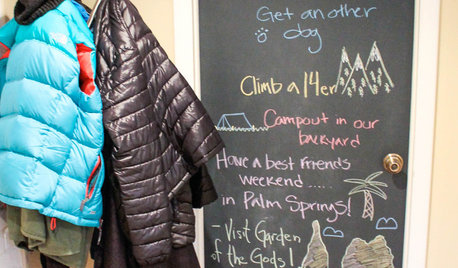
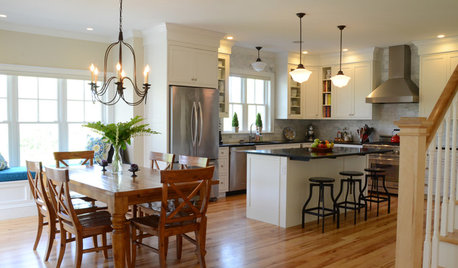
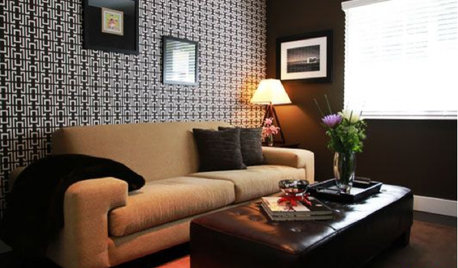
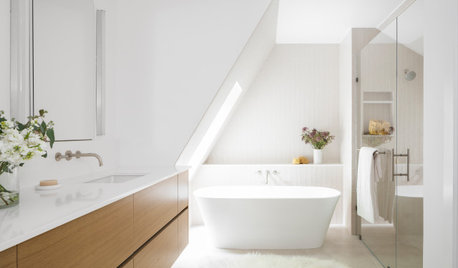
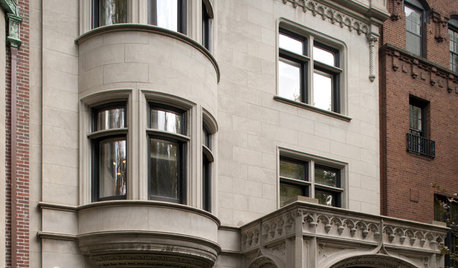










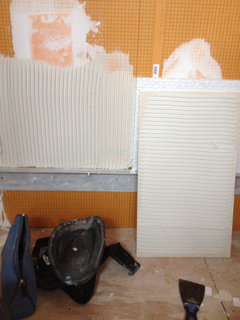
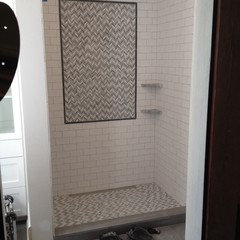
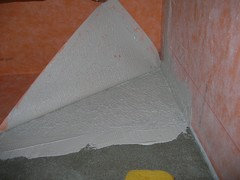

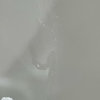
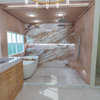

User